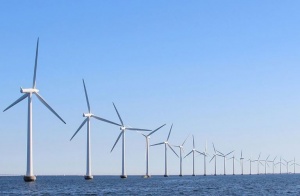The call for clean energy in Europe is increasing, and the North Sea will be crucial in the search for efficient routes that enable the large scale energy transition required to meet the Paris goals.
The report ‘Bringing North Sea Energy Ashore Efficiently’ takes the rapidly increasing offshore wind capacity on the North Sea as a starting point. Coupled with demand on shore, it shows that several solutions and technologies need to be developed in order to bring the energy to the end consumer in the most efficient way, and thus ultimately to the lowest cost to the consumer.
The study looks at two stylised pathways – the electrons (power) pathway and the molecules pathway, with a specific focus on H2 (Hydrogen) generation (power-to-gas). The study shows that a combination of both pathways will be needed if we are to meet the challenges of climate change in the future. To create an affordable and reliable energy supply in North West Europe, a hybrid system of (green) power and (green) hydrogen is key.
Compared to the current average CO2 emissions, such a shift to green hydrogen would represent approximately 32 megaton in CO2 savings annually when fully functional. Due to the large-scale nature of the investments needed, international cooperation will be necessary in order to make use of the full potential of the North Sea. Germany, the United Kingdom, the Netherlands, Belgium, Denmark and Norway feature centrally within the report.
Key findings from the report include:
-
Defining the role of the public and the private sectors is important. Governments should define goals around sustainability, and clean-up any counter-productive regulation. Private market parties can then use their creativity and skills to develop effective, affordable technical and economic solutions
-
If the current generation can shape the energy developed on the North Sea, the next generation will be able to enjoy the fruits of a cleaner, cheaper and more secure energy supply than ours
-
The next European generation can make use of technology know-how accumulated when developing these systems that will likely also be exportable to the rest of the world.
Read the full report WEC brochure_Online offshore






